| Ā° J-PARC News - April 2014 (Issue #108) |
| Dr. Asami Sano, a beamline scientist for the BL11 neutron beamline, "High-Pressure Neutron Diffractometer" (PLANET) , of the Materials and Life Science Experimental Facility (MLF) of J-PARC, received the 2014 Young Scientists' Prize for Science and Technology of the Minister of Education, Culture, Sports, Science and Technology (MEXT) . The prize was awarded for "Research on Hydrogen Bonds and the Isotope Effect in Minerals in the Earth's Deep Interior." |
  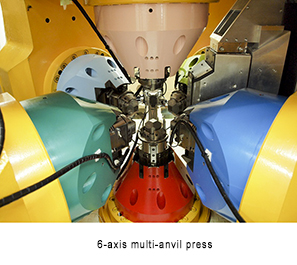 |
 * Click here to enlarge. * Click here to enlarge. * Click here to enlarge. * Click here to enlarge. |
|
| ĀúGrowing Interest on Transmutation Technology Research (April 7) |
| At the meeting of the Working Group for Evaluating Partitioning and Transmutation Technologies of the MEXT held last year, it was decided to actively move forward with research on transmutation technology at J-PARC, and starting this year, research and development has begun in earnest. By establishing such transmutation technology, it is expected to mitigate the burden of disposing of high-level radioactive waste, and society is showing a growing interest in this technology. The recent coverage by NHK (Nihon Hosou Kyokai : Japan Broadcast Company) can be regarded as reflecting this interest. Dr. Hiroyuki Oigawa, Leader of the Transmutation Section, was interviewed regarding research on transmutation technology, and other features included the lead-bismuth test loop which is the neutron target for nuclear spallation, and the planned site for a new transmutation experimental facility. The program also featured cross-section measurements at the ANNRI (Accurate Neutron-Nucleus Reaction measurement Instrument) of neutron beamline BL04 of the MLF. This instrument is being used to carry out the basic studies needed for this research, as well as research on neutron-capture cross-sections for the minor actinoid nuclides which will be the subject of transmutation. |
  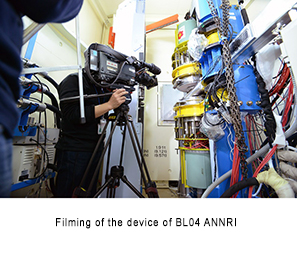 |
 * Click here to enlarge. * Click here to enlarge. * Click here to enlarge. * Click here to enlarge. |
| Ā£to Page Top |
|
| ĀúNeutrino Collaboration Meeting (April 14-19) |
| In the T2K International Collaboration Experiment, a high-intensity neutrino beam produced by J-PARC is observed at a neutrino detector (Super-Kamiokande) located 295 km away. A general meeting for this experiment was held at the Ibaraki Quantum Beam Research Center, and was attended by about 110 researchers from the various countries involved in the experiment. In July 2013, the T2K Experiment was the first in the world to discovery the electron neutrino appearance phenomena, and more recently it measured the muon-neutrino disappearance at the highest sensitivity in the world. |
 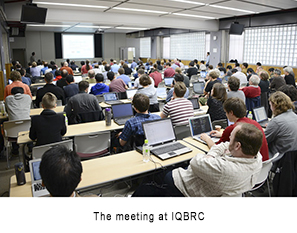
 * Click here to enlarge. * Click here to enlarge. |
| At this meeting, it was reported that special electromagnets called magnetic horns-crucial equipment involved in neutrino production-have been completely replaced, and there were also reports on the status of preparations for resuming the experiment. There was a lively exchange of views throughout the day on how to proceed with and analyze experiments using antineutrinos (the antimatter counterparts of neutrinos) which are being planned for the future. |
 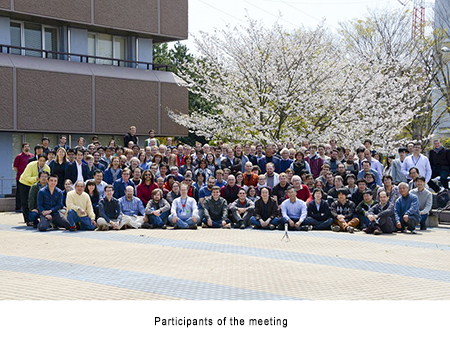 |
 * Click here to enlarge. * Click here to enlarge. |
| Ā£to Page Top |
| ĀúFacility Updates |
| Accelerators : At the Linac, acceleration has been increased from the previous 180 MeV to 400 MeV, and the facility is operating relatively smoothly. MLF : User operation is continuing with a beam power of 300 kW. Neutrino Experimental Facility (NU) : Completed maintenance of near detectors for resuming experiments. |
 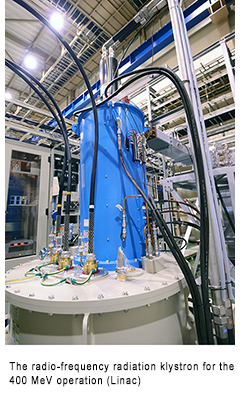 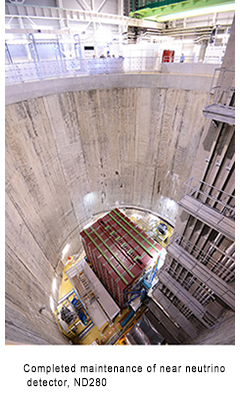 |
 * Click here to enlarge. * Click here to enlarge. * Click here to enlarge. * Click here to enlarge. |
| |
| Three magnetic horns used for about four years in the T2K Experiment were replaced in the period from November of last year to April of this year. This work was carried out in a radioactive environment, and thus before work began the air dose rate in the surrounding area was evaluated, and a mock test of the work was carried out. The actual work was carried out by remote control from a crane operation room isolated with a shield wall. |
 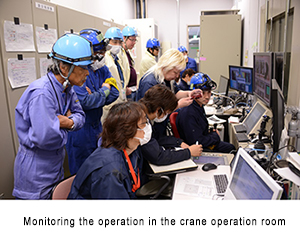 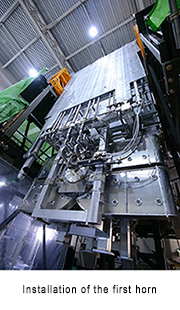
 * Click here to enlarge. * Click here to enlarge. * Click here to enlarge. * Click here to enlarge. |
| Ā£to Page Top |
|
| Repair work is currently underway at the Hadron Experimental Facility in accordance with measures to prevent accident recurrence confirmed by the national government and the local government in the area. Work being carried out in the experimental hall includes installing equipment to discharge air inside the room via a filter, and improving the airtightness of the primary beamline room. Other tasks include upgrading the machine building and contamination inspection room. |
|
| Construction has been started on a J-PARC Users Research Building with four floors above ground. The purpose of this facility is to improve the experiment environment for J-PARC users, and it is scheduled for completion in March 2015. |
|
| A tea ceremony was organized by the J-PARC Center as an opportunity for social interaction between the residents of Tokai Village and J-PARC users. The ceremony was held at the KEK Dormitory with the cooperation of the Tokai-mura International Center. At the time of the party, many foreign users, who were visiting J-PARC for a T2K Collaboration meeting, attended the ceremony. Dr. C. K. Jung (Professor, State University of New York, and Co-spokesperson of the T2K Experiment) welcomed everyone by saying that "many small interactions between people can help ensure world peace." |
  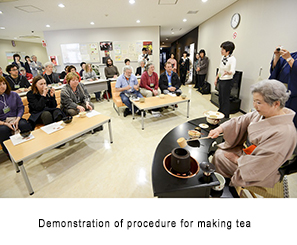
 * Click here to enlarge. * Click here to enlarge. * Click here to enlarge. * Click here to enlarge. |
| Ā£to Page Top |
|
©2014 J-PARC Center. All rights reserved.
|
|
|